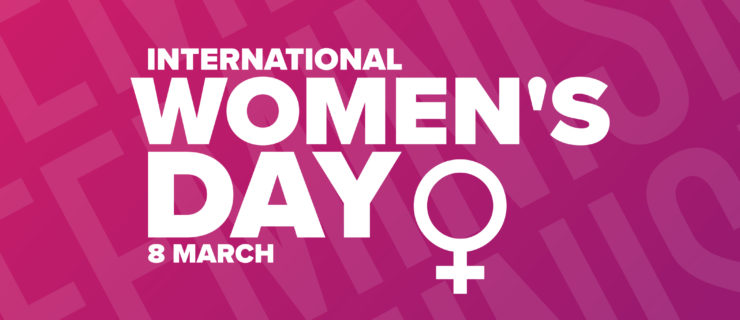How a Secret Society of Dancers Is Making Their Voices Heard
When Traequan Middleton was growing up in the Astoria neighborhood of Queens, New York, it wasn’t unusual for him to corral his friends and design intricate dances on them. “I was always the person to lead the pack,” Middleton remembers. Today, his knack for leadership hasn’t waned. In fact, he created and directs one of the city’s most popular youth dance ensembles: Secret Society Dance Company.
Like Middleton as a child, the dancers of Secret Society live in Astoria public housing, so when he looks at his students, he doesn’t just see their faces—he sees himself. That sense of connection has made his work as a teacher and mentor deeply personal. “What the youth can actually get now, I didn’t really have that when I was brought up,” he says. “So since I’m put in a position to show the youth how to be the next generation of change, why not go for it?”
Along with championing their biggest dreams, Middleton also ensures that if his students want to have careers in dance, they can. And when it comes to training, Middleton runs a tight ship. “This is their second [home],” he says with a laugh, noting the heaps of time the dancers spend in the studio. Over at least four days each week, the dancers, ages 11 to 21, rehearse and take classes weekly in a range of forms, including hip hop, contemporary, and step dance—and they seem to love every minute of it. “My favorite part about dancing with Secret Society is experiencing growth,” says Ramiyah Anderson, 11. As a dancer who hasn’t had much experience performing, Anderson says she values that Middleton and her peers want to help her become a stronger dancer. And as it stands, that hard work is paying off.
The 25-member group, which Middleton founded in 2014 and is part of the HANAC Astoria Cornerstone Youth Programming, has won numerous dance competitions in the tri-state area, coming out on top in two categories in 2022 at the Battle for the Belt event in Philadelphia, Pennsylvania. Part of what makes these victories so sweet, according to one of its newest members, is the group’s ethos of care. “I’ve been in a lot of dance companies,” Amiyah McArthur, 17, says, who joined the company in September. “Some dance companies are very competitive within the dance group, but Secret Society has been very welcoming.” From her first day with the troupe, she noticed that she was able to express herself freely without feeling judged. She attributes this inclusive environment to Middleton, who, she says, emphasizes that “we are actually all in this together to build each other up and to give back to the community.”
That focus on community has made Secret Society a major artistic force in New York City, allowing the dancers to leverage their popularity to help raise awareness around issues affecting their families and peers. Middleton, with the dancers, curates bimonthly performances for the community, each with a different theme. Their most recent performance addressed intracommunity violence. “We have members on the team who have lost their loved ones and parents to senseless acts of violence,” Middleton says. “So I just try to give the kids the opportunity to learn what somebody may be going through.” The group has also tackled issues like voting rights and LGBTQ+ equality, partnering with other dance teams throughout the city to amplify their messaging. Sometimes, these messages transcend city lines, spilling out to people all over the world through social media. In one of its popular YouTube videos, the group dances to a medley of songs to advocate for the protection of Black life. Sporting Black Panther Party–style berets and variations of white and black tops and bottoms, the dancers move with intensity and emotional range, encompassing sharp, full-bodied movements and smaller yet charged gestures.

Performances like this have helped the dancers appreciate how liberating dancing, and community, can be. “It’s always a plus when your peers [support] you expressing yourself, because some people need to have a little push,” Anderson says. “I think it’s really nice that we not only express ourselves, but express the topics that are going on in the community.”
Beyond developing rewarding movement practices and deep community ties, the dancers say they are learning life lessons from Secret Society that they can apply to their everyday lives. “I’ve learned how to be more patient,” McArthur says. “I’ve learned that things take time, and there’s a process to everything.”
But they’re also witnessing what a combination of hard work, stamina, and vision can produce, a recipe that has helped Middleton get to where he is today. Through him, the students say, they see that their goals are within reach. “I can see many of us having professional dance careers because of the training that we get,” McArthur says. “Secret Society gives you a sense of discipline for the real world.” Artistically, she says, Middleton and the company are pushing her to think outside of the box, to go beyond the limits she puts on herself, and to “be comfortable with the uncomfortable.”
For Anderson, her time with Secret Society has taught her the importance of a solid work ethic. “When you dance, you have to work hard to get what you want,” she says. “You have to do multiple steps in life to get you to where you want to be.”
Middleton guides the dancers through the ups and downs that define these lessons, but still, the endgame for him is clear: building community. “It only takes one person who believes in them for them to continue to push for those that are coming up after them,” he says. “It’s really about creating a second family, a home, unity.”




